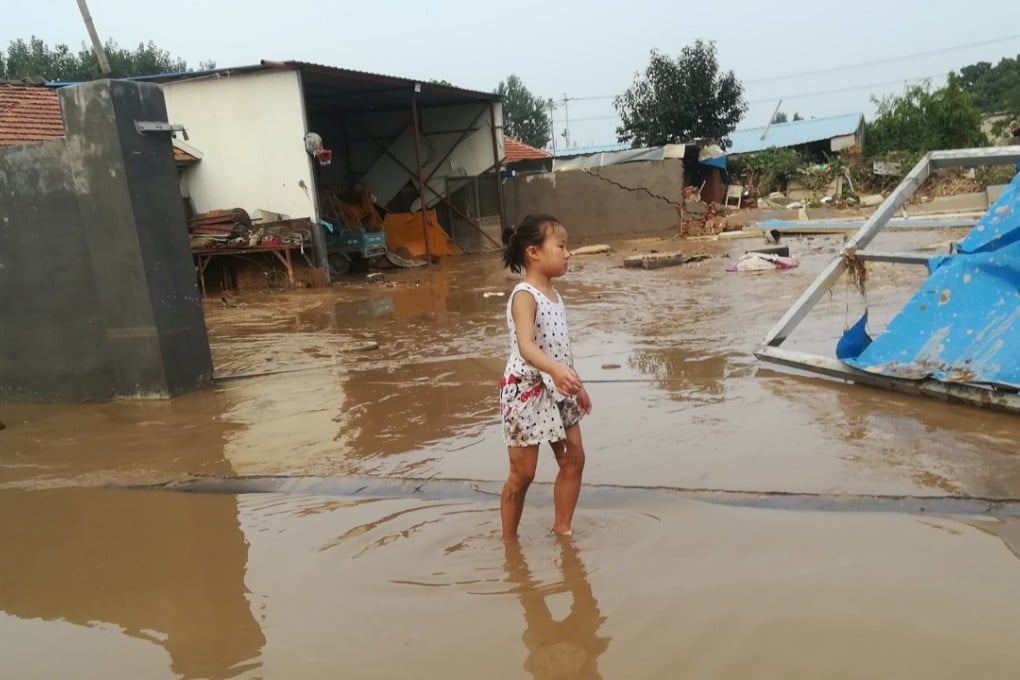Floods brought by Typhoon Rumbia devastate China’s biggest supplier of vegetables
Angry residents of Shouguang – where 13 people died and at least three are missing – say release of water from reservoirs may have added to the disaster

Torrential rain and widespread flooding brought by Typhoon Rumbia has left 13 people dead and at least three missing this week in the city of Shouguang, in eastern China, and angry residents say the authorities may have added to the devastation.
Floods have caused 9.2 billion yuan (US$1.34 billion) in economic losses in the city, with nearly 10,000 houses collapsed and 200,000 greenhouses damaged, the local government said on Thursday evening.
The city in Shandong province is known as China’s biggest producer of vegetables – some 4.5 million tonnes of fruit and vegetables are grown there every year. It is also home to the country’s biggest vegetable wholesale market.
While the authorities described the flooding as a natural disaster, residents have accused the local government of contributing to the problem by allowing water to be simultaneously released from three reservoirs in the region.
But Zhou Shouzong, director of the Weifang Flood Control and Drought Relief Command Office, defended the move, saying it had been necessary to release the water downstream of the Mi River near Shouguang, news website Thepaper.cn reported on Friday. Shouguang is under the administration of Weifang, a prefecture-level city.
“If we hadn’t discharged the water, it would have posed a serious threat to the safety of the reservoirs, and would even have increased the possibility of the dams collapsing,” he said. “[If that happened] it would have threatened the lives of millions of residents living in the downstream areas of the river.”
Heavy rain – far more than had been forecast – was the main reason the flooding had been so severe, according to the local government.